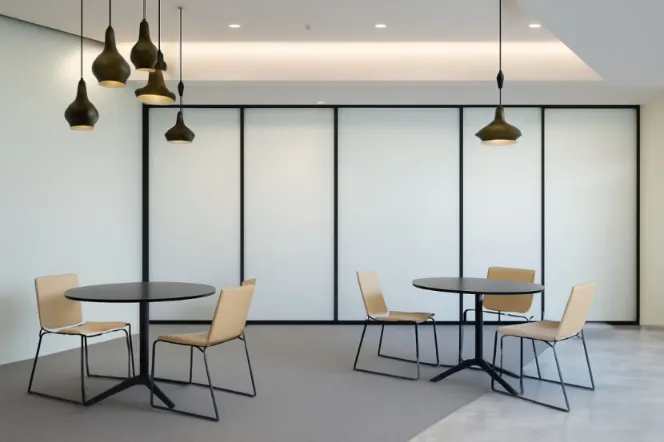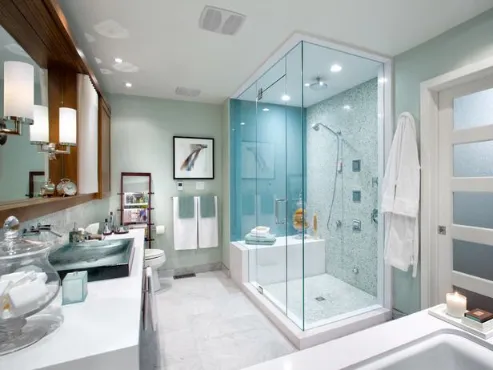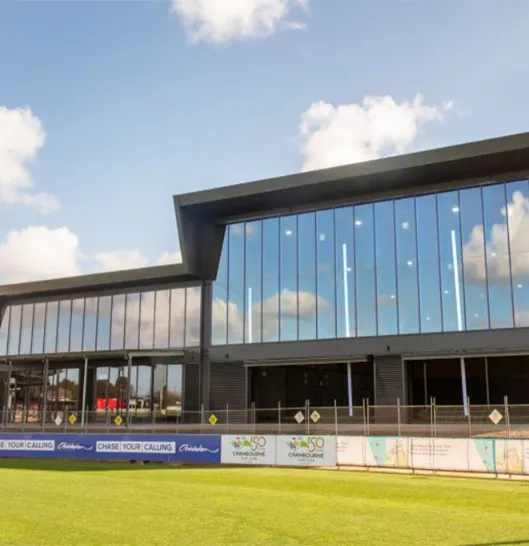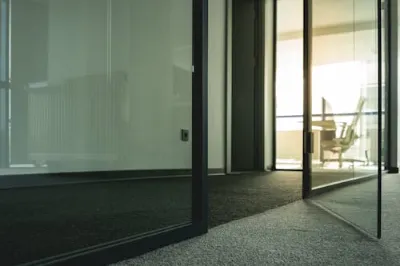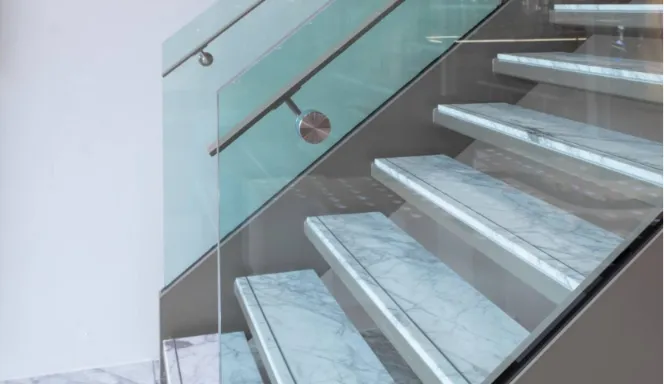
Introduction
Glass balustrades are everywhere in modern buildings. They look clean, let in light, and give a stylish finish to balconies, stairs, and terraces. In tall apartments, shopping malls, and even family homes, tempered glass balustrades have become very common.
But not all products are safe. When the glass is badly made, problems come quickly. Cracks, sudden breakage, and even collapse have happened in real projects. These failures cause injuries, bring legal trouble, and cost a lot to fix. Builders, owners, and designers should know what goes wrong with low grade products, and why working with trusted suppliers like Landson Glass makes such a big difference.
Material and Manufacturing Issues
Impurities in Raw Glass
Glass is made from sand, soda ash, and limestone. If these raw parts are not clean, small stones or air bubbles stay inside the sheet. These weak points grow into cracks later. Poor quality tempered balustrades often show tiny marks or distortions that come from this.
Inconsistent Tempering Process
Tempering needs heat over 600°C and quick cooling. If done well, the glass becomes up to five times stronger than float glass. But if rushed, some spots cool faster than others. This leaves hidden stress inside. Later, the panel may bend or break.
Ceramic fritted tempered glass shows what correct tempering looks like. The coating is fused deep into the surface and can handle temperature swings up to 250°C. Low quality panels almost never reach this level of strength.
Poor Lamination or Coating Quality
Some balustrades also use lamination for extra safety. When lamination is poor, bubbles, haze, or peeling edges appear. Once water enters, the layers separate. Landson makes laminated products with PVB, SG®, or acoustic interlayers, using climate controlled lines. By contrast, cheap laminated balustrades often lose clarity and safety after only a short time.
Structural Weaknesses in Installation
Incorrect Edge Processing
Edges are the weakest part of tempered glass. If cutting is rough or polishing skipped, small chips remain. These chips turn into cracks when the panel is under pressure. Poor balustrades often show sharp or uneven edges as a warning sign.
Inadequate Mounting Systems and Fixings
Glass panels need strong clamps and fittings. If cheap fasteners or weak metals are used, stress builds around the joints. Cracks often start from these spots.
Stress Concentration from Improper Drilling
Balustrades need holes for bolts. If drilling is too fast or too close to the edge, cracks form. Good suppliers drill slowly, with cooling, and keep safe distances. Poor ones skip these steps, and panels fail soon after installation.
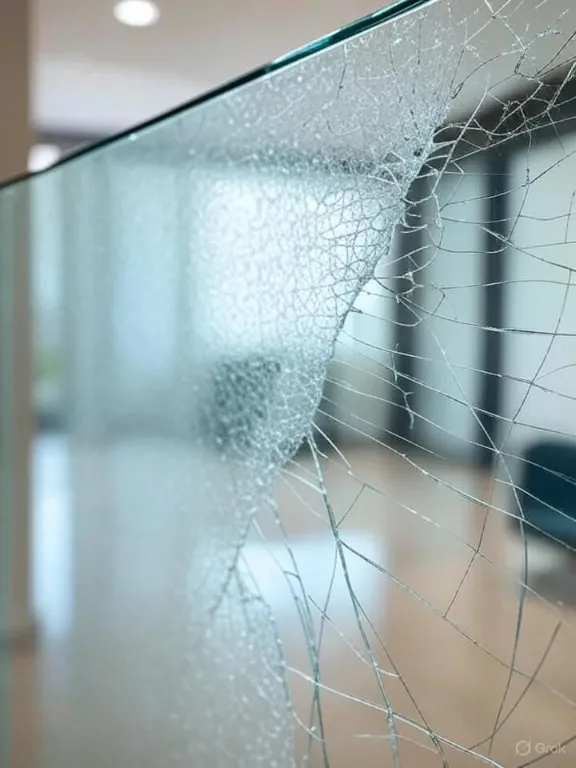
Performance Failures in Real Use
Spontaneous Breakage from Nickel Sulfide Inclusions
One of the most dangerous failures is sudden shattering without any impact. The reason is often nickel sulfide particles inside the glass. With heat, these particles expand. Stress grows, and the glass bursts into small pieces.
Reduced Strength Under Temperature Changes
Balustrades on balconies face hot sun, strong winds, and rain. Poor quality tempered glass cannot handle these changes. Heat builds unevenly, and cracks appear. By contrast, tinted laminated glass is made in thick sizes and large sheets. These stay stable even in tough outdoor use.
Cracking and Delamination in Outdoor Conditions
Moisture is another big enemy. If seals are weak, water gets between laminated layers. Over time, the glass starts to peel apart. Rice paper laminated glass, bonded with EVA in controlled conditions, shows how proper lamination avoids this. Poor products rarely last long outside.
Safety Risks for Users
Falling Shards and Fragmentation
When poor tempered glass breaks, it may not crumble into safe little pieces. Instead, sharp shards drop from balconies or stairs. These shards can hurt people below.
Loss of Barrier Integrity
Balustrades must work as a barrier. If panels crack or detach, the whole system fails. On high levels, this risk is serious and can be deadly.
Legal and Liability Consequences
Australia and New Zealand have strict codes. If poor balustrades fail, builders face lawsuits. Owners pay high costs to replace them. Certified products, like those used in Landson’s project experience, reduce these risks.
Signs of Poor Quality Before and After Installation
Visual Defects
Cheap glass often shows waves, uneven shades, or air bubbles. Edges may have chips or scratches. These flaws should not be ignored.
Sound and Impact Resistance
Good tempered glass makes a clear ringing sound when tapped. Poor panels sound dull, showing hidden stress. In impact tests, weak panels often fail much faster.
Early Corrosion of Fittings
Even if the glass looks fine, poor fittings rust early. Rust weakens clamps and bolts, which then stress the panel. Complete systems, not just the glass, must meet safety needs.
Best Practices to Avoid Failures
Choosing Certified Glass from Trusted Manufacturers
Builders should ask for proof of testing. Tempered glass for balustrades that meets Australian, New Zealand, or European codes is much safer.
Compliance with Standards
Standards control thickness, impact strength, and load. Ignoring them leads to big problems later.
Regular Inspection and Maintenance
Even strong balustrades need checks. Looking for cracks, loose bolts, or early peeling saves both money and safety.
Conclusion
Poor quality tempered glass balustrades are not just a small problem. They are a real risk. Failures usually come from bad raw materials, weak tempering, or sloppy drilling. The results can be sudden and dangerous.
The good news is clear: high quality glass products exist. Balustrades tempered laminated glass supplied by Landson are tested for safety and long life. Choosing the right glass protects people, protects buildings, and keeps modern spaces safe and bright.
FAQ
Q1: Why do tempered glass balustrades sometimes break on their own?
A: Nickel sulfide inside the glass can expand with heat. This hidden stress makes the panel burst into pieces.
Q2: How can you spot poor quality balustrade glass?
A: Look for bubbles, waves, or edge chips. If fittings rust early or the sound is dull when tapped, it’s low quality.
Q3: Are laminated balustrades safer than single tempered glass?
A: Yes. Laminated balustrades hold together even when cracked. The interlayer keeps the barrier strong.
Q4: What standards apply to balustrade glass?
A: Australia, New Zealand, and Europe all have strict codes. Certified products meet rules for impact, load, and safety.
Q5: Why is maintenance important for glass balustrades?
A: Regular checks catch small cracks or loose bolts early. Fixing them fast prevents bigger failures and saves lives.



